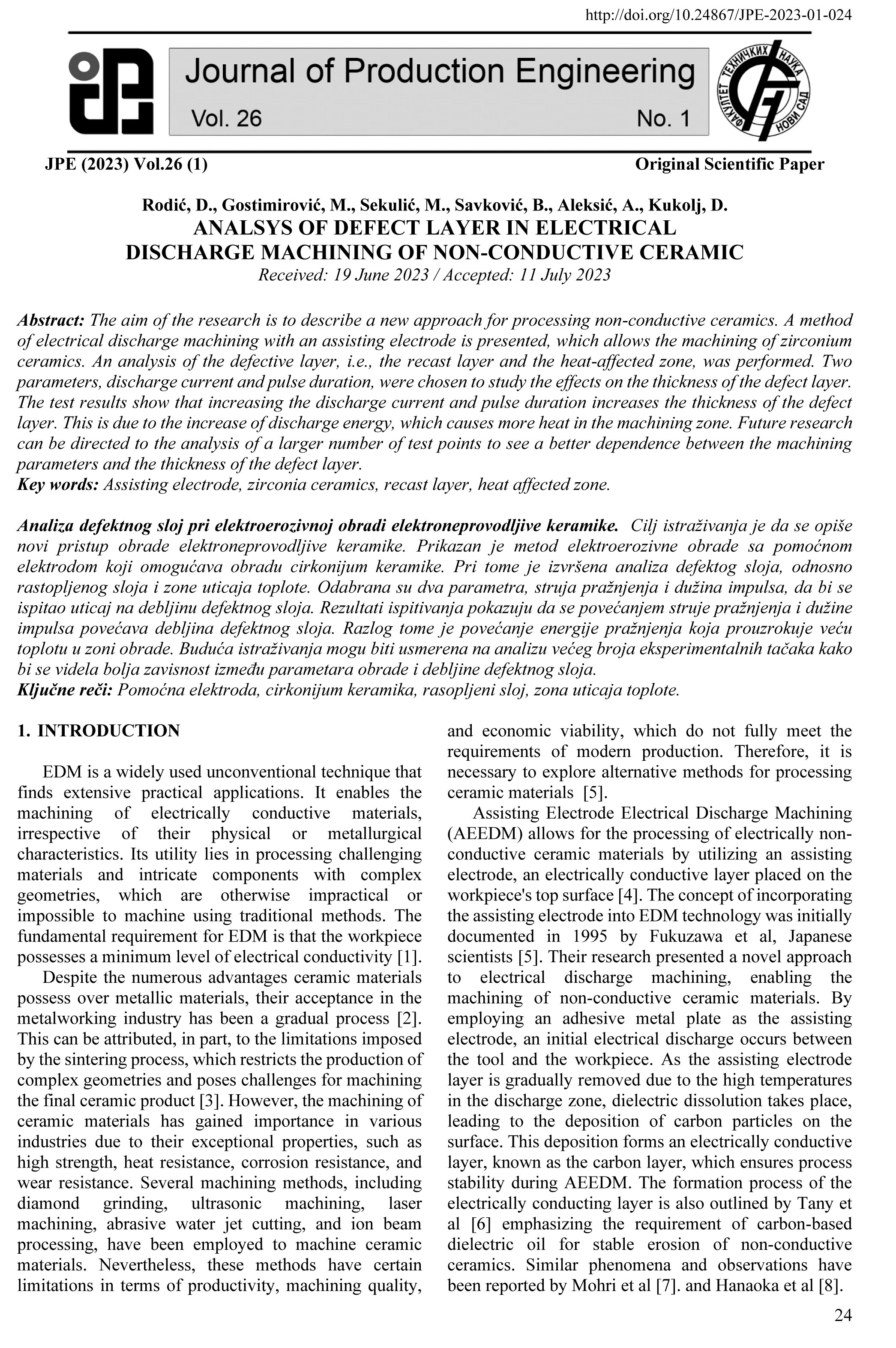Analsys of defect layer in electrical discharge machining of non-conductive ceramic

Published 2023-07-19
abstract views: 54 // FULL TEXT ARTICLE (PDF): 35
Keywords
- assisting electrode,
- zirconia ceramics,
- recast layer,
- heat affected zone
How to Cite
Copyright (c) 2023 Journal of Production Engineering

This work is licensed under a Creative Commons Attribution 4.0 International License.
Abstract
The aim of the research is to describe a new approach for processing non-conductive ceramics. A method of electrical discharge machining with an assisting electrode is presented, which allows the machining of zirconium ceramics. An analysis of the defective layer, i.e., the recast layer and the heat-affected zone, was performed. Two parameters, discharge current and pulse duration, were chosen to study the effects on the thickness of the defect layer. The test results show that increasing the discharge current and pulse duration increases the thickness of the defect layer. This is due to the increase of discharge energy, which causes more heat in the machining zone. Future research can be directed to the analysis of a larger number of test points to see a better dependence between the machining parameters and the thickness of the defect layer.

